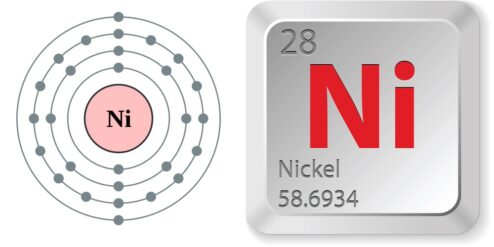Introduzione: Nickel is a versatile metal with a wide range of uses, but it also has a dark side. Certain forms of this element can be highly toxic, posing serious health risks to humans and the environment. In this article, we will explore the properties of nickel, the different forms it can take, and identify the most toxic form of nickel. We will also delve into the impact of toxic nickel on human health, safety measures for handling this dangerous substance, and strategies for mitigating the risks of toxic nickel exposure.
Understanding the Properties of Nickel
Nickel is a hard, silvery-white metal that is naturally occurring in the earth’s crust. It is resistant to corrosion and oxidation, which makes it a valuable resource in various industrial applications. Nickel is a good conductor of heat and electricity, and it is also magnetic at room temperature. However, nickel can also be harmful to human health, especially in certain forms. The toxicity of nickel depends on several factors, including its form, the route of exposure, and the dose.
The Different Forms of Nickel: An Overview
Nickel exists in various forms, including elemental nickel, nickel alloys, and nickel compounds. Elemental nickel is the pure form of nickel, while nickel alloys are combinations of nickel with other elements, such as copper, chromium, and iron. Nickel compounds, on the other hand, are substances where nickel is combined with other elements, such as oxygen, sulfur, and chlorine. These compounds can be soluble or insoluble in water, and their toxicity can vary significantly.
Identifying the Most Toxic Form of Nickel
Among the different forms of nickel, nickel compounds, specifically nickel subsulfide (Ni3S2) and nickel refinery dust, are considered the most toxic. Nickel subsulfide is a black, crystalline powder that is insoluble in water. It is often produced during the refining of nickel and can be inhaled by workers in the industry. Nickel refinery dust, on the other hand, is a by-product of nickel refining that contains various nickel compounds, including nickel subsulfide.
The Impact of Toxic Nickel on Human Health
Exposure to toxic forms of nickel can have serious health effects. Inhalation of nickel subsulfide or nickel refinery dust can cause respiratory problems, such as chronic bronchitis and reduced lung function. These substances are also carcinogenic and can increase the risk of lung and nasal cancer. Skin contact with nickel can cause dermatitis, an itchy skin rash. Ingestion of nickel can lead to stomach discomfort, nausea, and vomiting. Long-term exposure can also lead to nickel allergy, a condition that causes a skin reaction to nickel-containing objects.
Safety Measures to Handle Toxic Nickel
Given the health risks associated with toxic nickel, it is crucial to handle these substances safely. Workers in industries that use or produce nickel should wear protective clothing and equipment, such as gloves, respirators, and eye protection. Work areas should be well-ventilated to reduce the concentration of nickel in the air. Regular health checks and monitoring of nickel levels in the workplace can also help detect early signs of exposure and prevent health problems.
Mitigating the Risks of Toxic Nickel Exposure
To mitigate the risks of toxic nickel exposure, industries should implement strict safety protocols and provide adequate training to their employees. The use of less toxic alternatives, where possible, can also reduce the risk. Proper disposal of nickel waste can prevent contamination of the environment. On a personal level, individuals can reduce their exposure to nickel by avoiding nickel-containing jewelry and other objects, especially if they have a nickel allergy.
Conclusioni: Nickel is a valuable resource with many uses, but it also has a dark side. The most toxic forms of nickel, nickel subsulfide and nickel refinery dust, can cause serious health problems, including cancer. It is crucial to handle these substances safely and take steps to reduce exposure. By understanding the risks and taking appropriate precautions, we can harness the benefits of nickel while protecting our health and the environment.
Per approfondire:
- Nickel – Element information, properties and uses | Periodic Table: Provides comprehensive information about the properties and uses of nickel.
- Nickel Compounds – National Cancer Institute: Discusses the cancer risks associated with exposure to nickel compounds.
- Nickel Allergy – Mayo Clinic: Provides information about nickel allergy, including symptoms, causes, and prevention strategies.
- Occupational Safety and Health Guideline for Nickel, Metal and Insoluble Compounds: Offers guidelines for handling nickel safely in the workplace.
- Nickel and its compounds: environmental aspects: Discusses the environmental impacts of nickel and its compounds.


